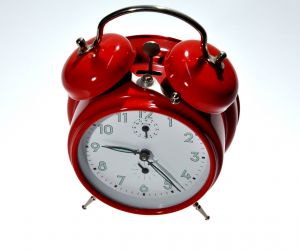 The date was February 9th, the year – 1942. America was at war. In fact, it was just one day before the Japanese launched a brutal attack on our U.S. navy base in Midway. President Roosevelt and Congress implemented Daylight Savings Time on this day – then called “War Time” – to conserve fuel and enable the country to better utilize resources as the Europeans did. It’s been that way ever since!
The date was February 9th, the year – 1942. America was at war. In fact, it was just one day before the Japanese launched a brutal attack on our U.S. navy base in Midway. President Roosevelt and Congress implemented Daylight Savings Time on this day – then called “War Time” – to conserve fuel and enable the country to better utilize resources as the Europeans did. It’s been that way ever since!
Why Daylight Savings Time?
Originally, Benjamin Franklin offered his wisdom “Early to bed, early to rise makes a man healthy, wealthy and wise” — based on the Parisian model of awakening early to work when the sun came up. Nowadays, people work based on set schedules, regardless of the sun’s position. When farmer George Hudson first proposed the idea of Daylight Savings Time, he just wanted to have an extra hour of sunlight in the summer to work on his garden.
In 1916, the industrious Germans finally put the idea into practice to conserve fuel by encouraging people to spend more time outdoors, away from artificial lighting. The U.S. dabbled with Daylight Saving during World War I for a short few months, but it wasn’t widely implemented until World War II.
Some people argue that Daylight Savings Time only saves the average household $4 per year in energy consumption and that, in some cases, it actually increases consumption related to greater gasoline and air conditioning use during one’s waking hours.
How Do We Change The Time?
In the Spring, you set your clock one hour ahead. In autumn, you set your clock one hour back. Many people remember this time change with the saying, “Spring forward; Fall back.”
When Is Daylight Saving Time?
- Time Magazine called Daylight Saving Time a “chaos of clocks” back in 1963, when any locality could regulate when the clocks changed. For instance, Iowa had 23 different start/end dates alone! Can you imagine being a passengers on a 35-mile bus ride from Steubenville, Ohio to Moundsville, West Virginia and going through seven time changes?
- In 1966, the Uniform Time Act stipulated that the clock shall change forward on the last Sunday in April and backward on the last Sunday in October. In 1986, the law was amended to skip forward on the first Sunday in April.
- This year, however, Daylight Saving Time will be on the second Sunday of March to correspond with the first day of spring and the vernal equinox (which is Tuesday, March 20th at 1:14 AM, in case you were wondering). The time will fall back on November 4th, 2012.
| Year | Begins | Ends |
| 2017 | March 12 | November 5 |
| 2018 | March 11 | November 4 |
| 2019 | March 20 | November 3 |
Fast Facts About Daylight Saving:
- It’s actually “Daylight Saving Time,” not “Daylight Savings Time,” as people often say.
- 75 countries have at least one location that observes Daylight Savings Time.
- 164 countries do not observe the time change at all.
- Two states do not observe the time change: Arizona and Hawaii.
- Four U.S. territories do not change the clock: Puerto Rico, Guam, the Virgin Islands and the Mariana Islands.

